In the early mid-1990s days of the Internet I would spend time looking at art by professional painters who specialise in dinosaur art. This was a few years after the smash hit film 'Jurassic Park' was released, and I got the impression that business was booming. In the 1980s the term paleo-art or paleoart was coined for this type of art.
It seems that artists who specialise in this type of art are not a new phenomenon. So let's have a look at some of the most notable.
Great Reptiles era
This was the era from 1890 - 1970 when dinosaurs were seen as extinct unevolved reptiles which 'could not compete with mammals', 'became sluggish in the cold' and were 'stupid'.
In fact the dinosaurs suppressed mammal evolution for millions of years, and many had insulation against the cold in the form of primitive fathers and even very rarely, fur. They also had brains about as complex as the mammals and birds of their time, because complex brains would only evolve later for the advanced mammals.
So the paintings of this era, while often excellent, are not thought to be realistic depictions of how the dinosaurs actually looked and moved.
Charles R Knight
USA 1874-1953
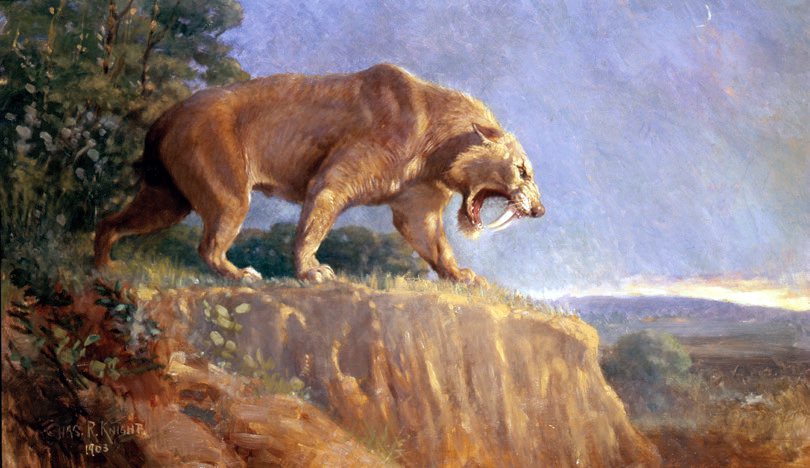
Knight was one of the first established paleo artists and his work influenced much of the later literature about dinosaurs. He became the favoured artist of the American Natural History Museum, and many other reputable museums in the USA. Although critics accused him of too much artistic license in his recreations of prehistoric creatures he insisted that his paintings were based on study of the fossils and where possible of similar living creatures.
Some of his pictures perpetuated myths about their subjects such as for example his pictures of sauropods in swamps, when actually they more likely lived on dry land. One can only criticise Knight so far, since he worked with the best science available at the time.
Nevertheless there is no doubt that Knight inspired an interest in dinosaurs among generations of children and adults, and for that his pictures deserve to be seen. They are also rather wonderful, as the above example of Smilodon shows.
Most of the paleo-artists below cite Knight as an influence.
Zdeněk Burian
Czechoslovakia 1905-1981
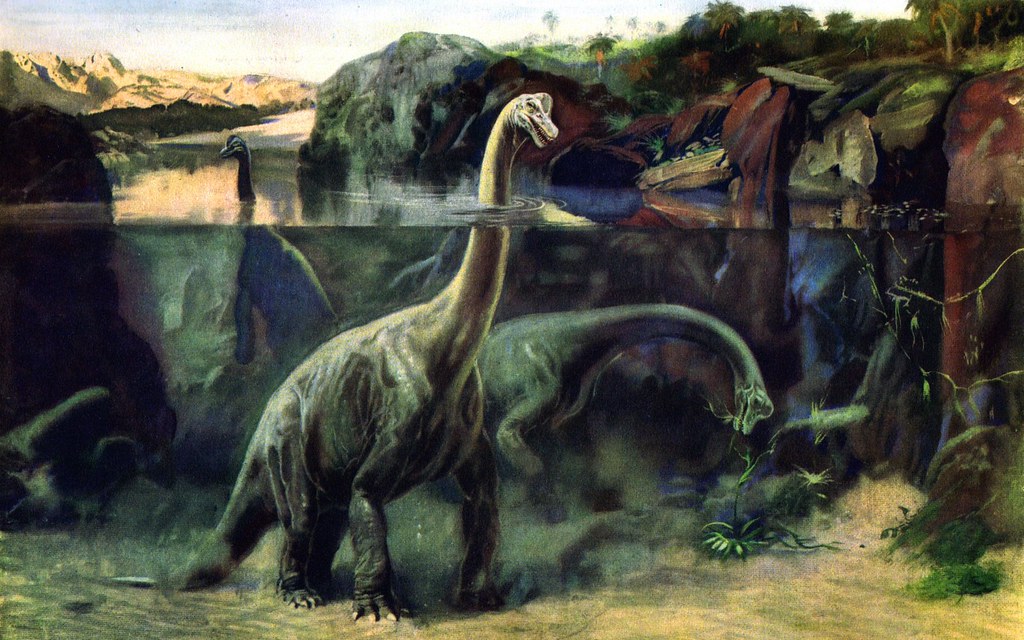
Burian was primarily a book illustrator, the majority of whose work was not paleo art. He was inspired by Charles Knight to paint prehistoric creatures in the 1930s and throughout the 1940s and 50s he illustrated books about prehistoric life, and painted for museums, with an interlude when the occupying Nazis prevented him from working.
After the renaissance of the dinosaurs Burian adapted and painted pictures of them as much more active animals.
The example of his work above shows brachiosaurs in what was assumed by palaeontologists of the time to be their 'natural habitat', stood on the bottom of lakes with their heads above the surface of the water. Research has since showed that the pressure of the water would have collapsed their lungs, and it is thought that their long necks in fact evolved to allow them to browse the foliage high up in trees.
Burian's skilful illustrations did, like Charles Knight's, inspire interest in dinosaurs all around the world. They should be admired as fine if sometimes technically incorrect paintings of the dinosaurs as they were seen by his scientific contemporaries.
Rudolph Zallinger
Russia/USA 1919-1995
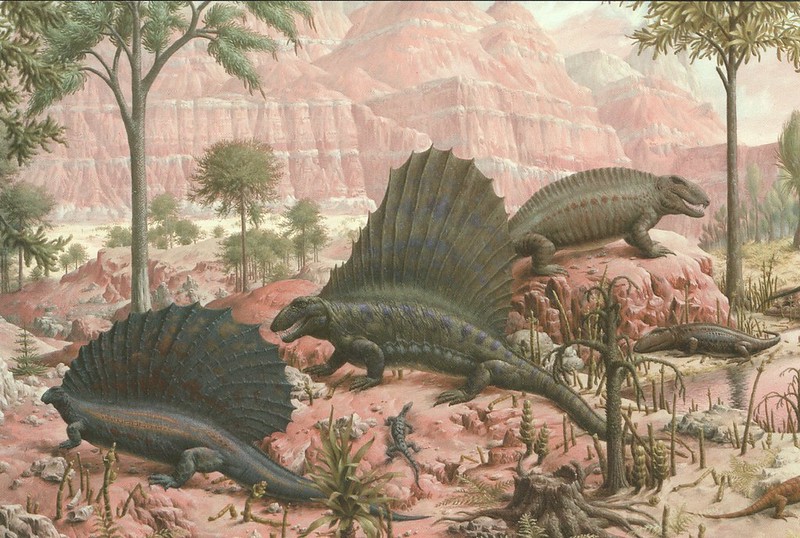
A part of Zallinger's world famous mural 'Age of Reptiles' at the Yale Peabody Museum. Courtesy Yale Peabody Museum. Rudolph Zallinger was a Russian born painter whose family emigrated to the USA in 1924. He won a scholarship to Yale University and studied fine arts. There he painted for the Peabody Museum the world famous 'Age of Reptiles' mural which inspired many books and paintings, and also apparently the Japanese film 'Godzilla'. The mural is painted in egg tempera, unusually for a large modern work. To paint a picture this good in tempera is a staggering feat.
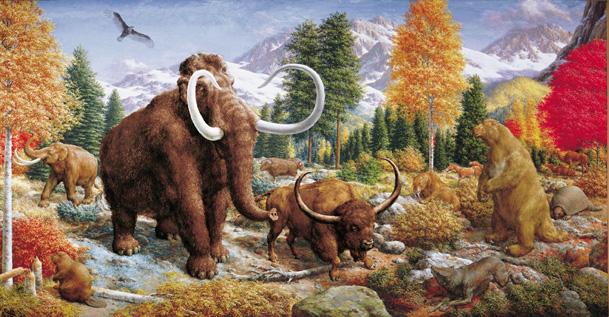
Above is Zallinger's painting of the 'Age of Mammals' which is similarly impressive but painted of the much later Pleistocene era. These two paintings have become tourist attractions in their own right.
Zallinger certainly left as his legacy some enduring works which inspired people around the world.
The 'renaissance' of our perception of the dinosaurs
From the late 1960s scientists began to re-evaluate how the dinosaurs lived, following the discovery of new specimens which looked very much like birds, such as Deinonychus. A re-analysis of the fossil evidence using modern techniques such as medical scanners pointed to at least some of these creatures having high metabolisms, unlike the reptiles they were supposed to be. Also the question of when birds branched off from dinosaurs became less clear than it had been from the famous Archaeopteryx fossil. It seemed from new and finely detailed fossil finds that there were many dinosaurs which had feathers, lightweight bird-like bodies with partly hollow bones, and yet did not have wings.
This new appraisal has become known as the 'Dinosaur Renaissance'.
A key leader in this renaissance was palaeontologist Robert Bakker who is also a capable artist as can be seen in his drawing below. Bakker was a pioneer in the recasting of dinosaurs as more active, intelligent and social animals than mere reptiles. Basically he claimed that dinosaurs behaved very much like birds instead of lizards. His ideas have now become the accepted norm among palaeontologists.
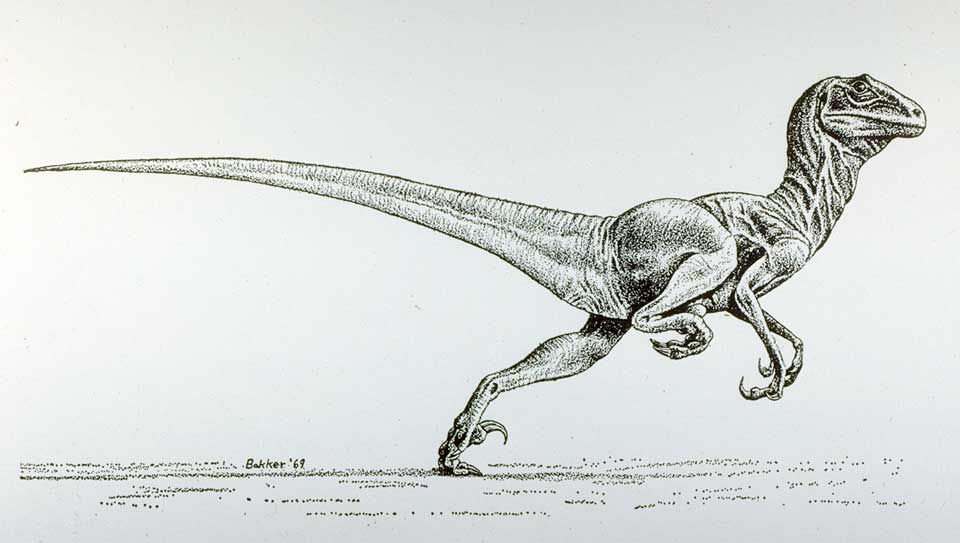
More recently still, scans of fossilised dinosaur brain tissues have shown a much higher density of neurones than was expected. This suggests that the fast moving predatory dinosaurs in particular may have been a lot more intelligent than we have assumed.
Mark Hallet
USA 1947-present
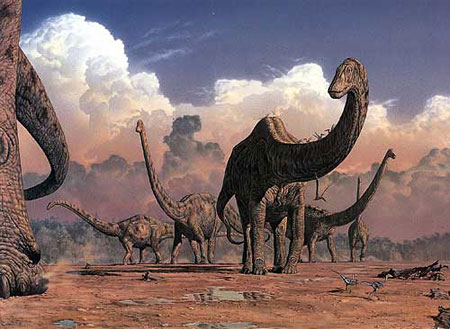
Mark Hallet lives in Texas, USA and is a leading artist of the dino-renaissance. He has painted for the San Diego Museum of Natural History and National Geographic among others. His pictures depict dinosaurs moving with their tails held off of the ground to balance their graceful movement.
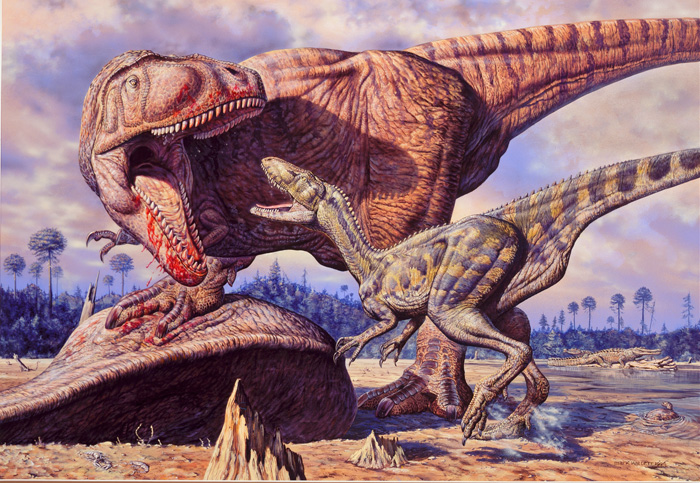
Gregory S. Paul
USA 1954-present
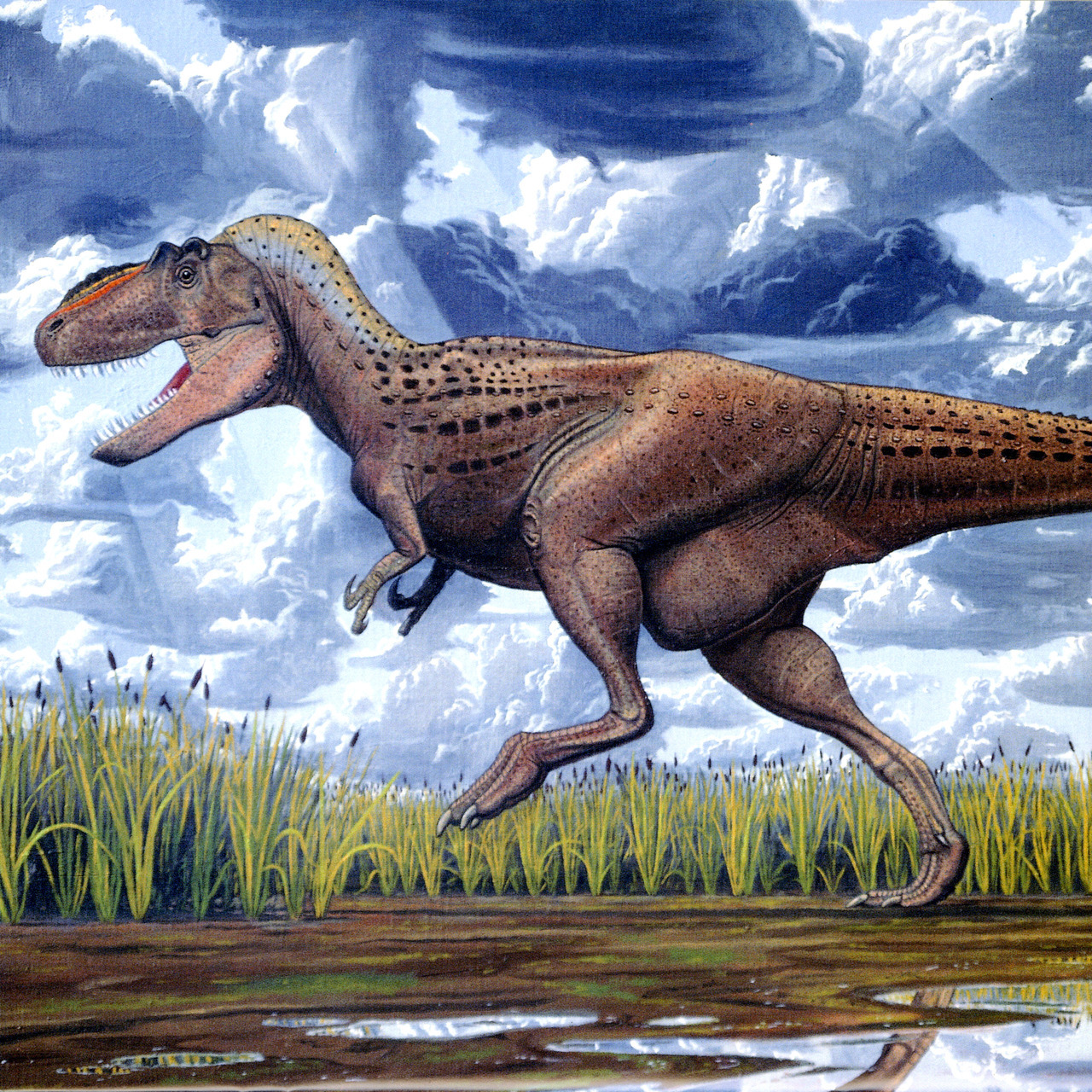
Paul was a pioneer of the dino-renaissance whose work shows the creatures in dynamic and active poses. He has also contributed to academic thinking on dinosaurs such as the thermoregulatory theory which claims that only endothermic creatures can grow to the great weights seen in many dinosaurs. He has also speculated that many of the smaller carnivorous theropod dinosaurs, which palaeontologists currently think were flightless, actually had aerodynamic feathers and could fly.
Doug Henderson
USA 1949-present
Doug Henderson is from Montana, USA and is known for artistic paintings of dinosaurs which make subtle use of light effects.
Henderson's paintings often feature unusual angles and a lot of painterly care goes into the environments be they forests, savannahs or oceans.
Like many of the paleo-artists here Henderson has worked for museums, television and films including Jurassic Park.

John Gurche
USA
John Gurche is a paleo-artist famed for his pictures of dinosaurs. He also paints and sculpts early hominids, in detailed sculptured reconstructions as can be seen here on his website.
His paintings often show exciting and dynamic scenes such as the one shown below.
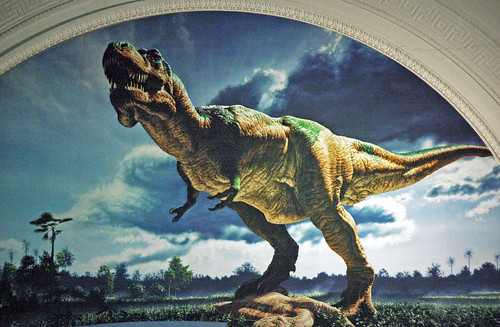
Tyrannosaurus Rex 'Sue' as painted by John Gurche for the Chicago Field Museum of Natural History. All rights reserved. Reproductions of John Gurche's wonderful pictures can be purchased here.
Gurche's painting of the battle between Daspletosaurus and Styracosaurus was used on the cover of the seminal book 'Dinosaur Heresies' and can be viewed and purchased here as a print.
If you have liked what you read here there are some excellent books about dinosaur art. Try any of the picture links below.





